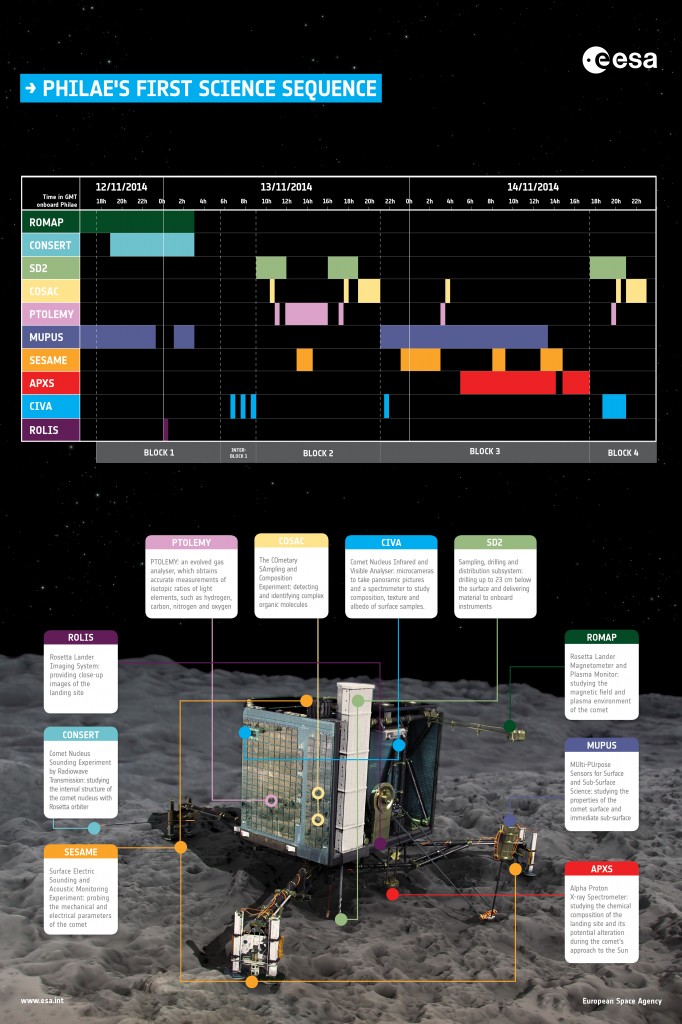If you were wondering what Philae is going to do once on the comet, here is a timeline of the lander’s science operations during the first 2.5 days on the surface of 67P/C-G.
The timeline includes activities after touchdown, but it does not cover the experiments conducted during the seven-hour descent or immediately upon touchdown and in the 40 minutes after (which were already summarised in a previous post about the landing timeline). Details about the individual instruments are provided below.
The sequence of experiments is divided up into ‘blocks’. These follow a certain order because some measurements require Philae’s ‘body’ to be rotated, lifted or lowered before performing the next set. For example, during the ‘inter-block’, Philae will make these movements and take a new panoramic image.
The time is given in GMT on the lander; the lander relays data to the orbiter for storage and is queued for transmission to Earth. The one-way signal travel time Rosetta and Earth during 12–14 November is about 28.5 minutes.
The duration of the first science sequence that can actually be executed depends on the lifetime of the primary battery. If solar power is available to recharge the secondary battery then this may mean the full sequence can be executed. The ‘long-term science’ phase, which also depends on how long it takes for the secondary battery to recharge, is not included in this graphic; this phase could last until March 2015.










Discussion: 4 comments
A bigger version of the image would be great, to be able to actually read it.
Click on the picture. In the picture that follows, and just below it, you can download the .jpg. Double-click on it. It opens in Windows Viewer. Zoom/scale it to your need.
Much much better than Interstellar or than drones bombing Arabs.
I was very happy to read about such a milestone in human history. First ever landing on a comet, what is next? This is truly one of the biggest breakthroughs in space technology and in our never ending re-search about our very own existence. Another clear evidence what can one achieve.